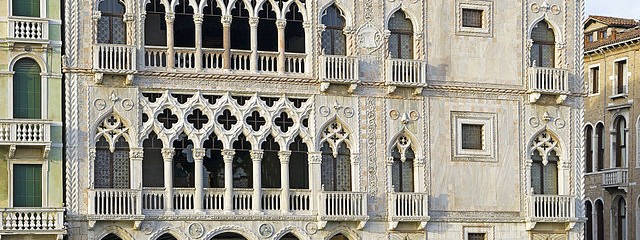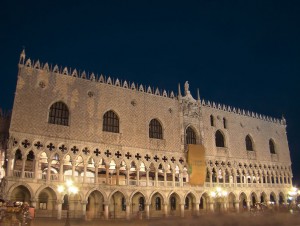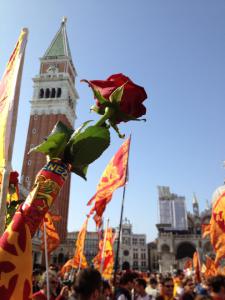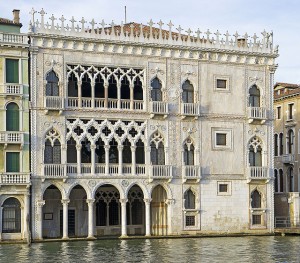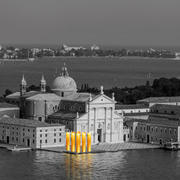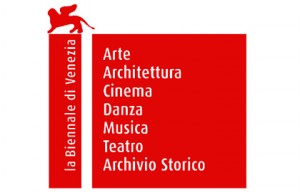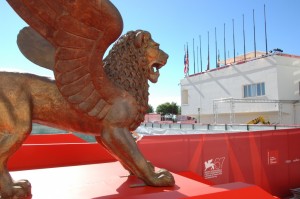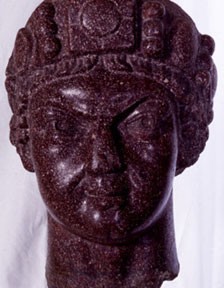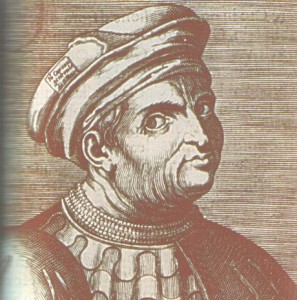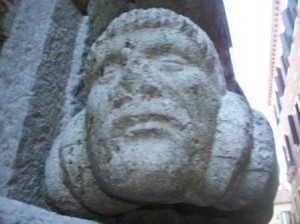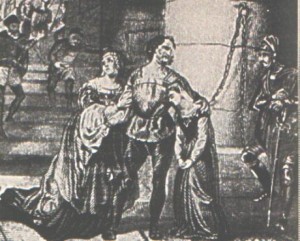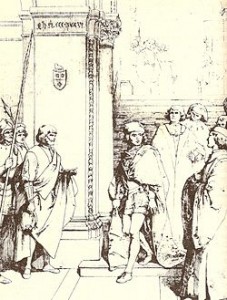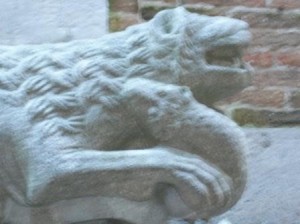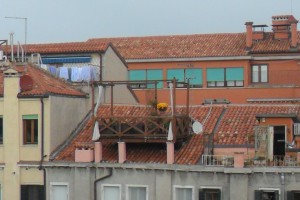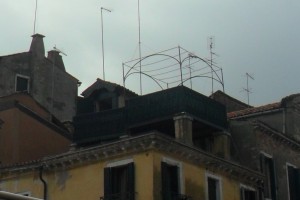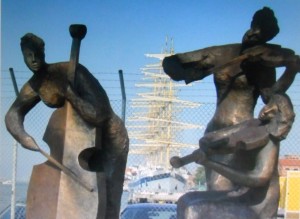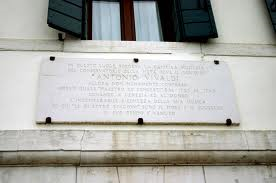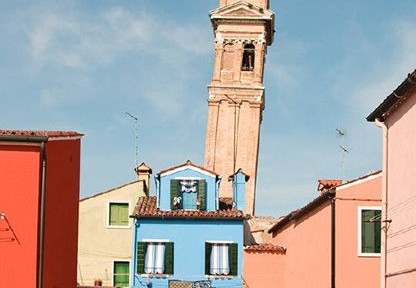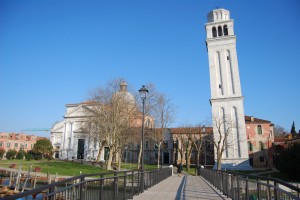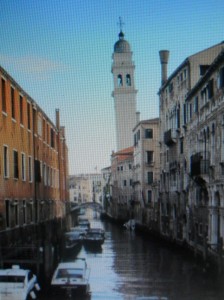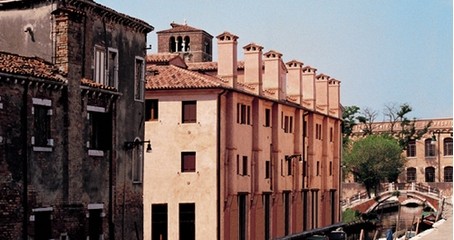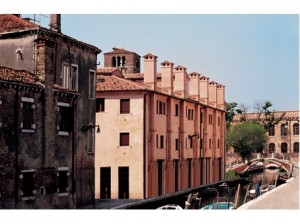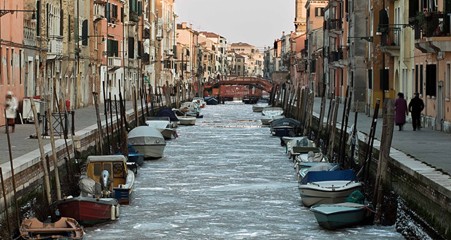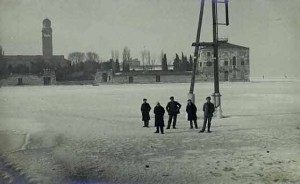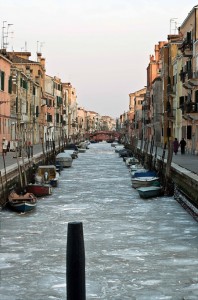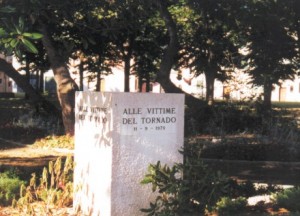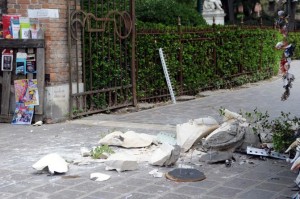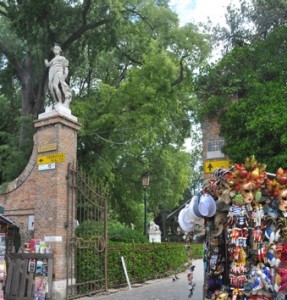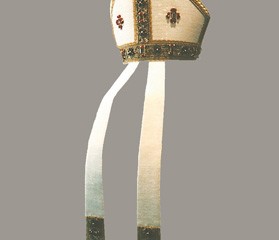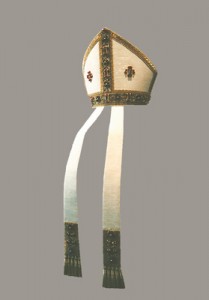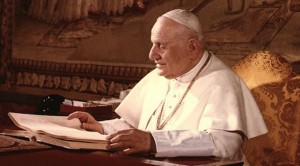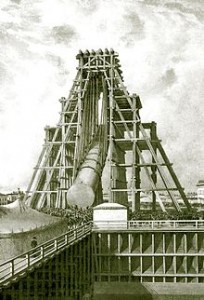An open-air museum, Venice, is among the most beautiful cities in the world and with its lagoon,is considered, World Heritage Site .
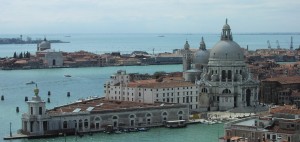 Those who entering for the first time in Venice,are suddenly struck by the landscape of a city that seems a scene of a movie ,where everything is of another era, where time seems to have stopped two centuries ago.
Those who entering for the first time in Venice,are suddenly struck by the landscape of a city that seems a scene of a movie ,where everything is of another era, where time seems to have stopped two centuries ago.
Below you can read a brief description of the main museums of Venice, the prices and schedules.
Ducal Palace
Considered the grandest civic structure in Italy, dates from 1309. In 1577 a fire destroyed much of the building .For 400 years ,it was the most powerful place in Europe . The Ducal Palace has played three main roles: Doge’s residence, the place of government and courthouse.
Museum hours:
from 1 April to 31 October. 8:30 to 19:00 (admission allowed until 18:00)
from 1 November to 31 March 8:30 to 17:30 (admission allowed until 16.30)
Closed on 25 December and 1 January
Ticket:http://palazzoducale.visitmuve.it/en/home/
Address: Piazza San Marco, 1, 30124 Venice; Phone: 041 271 5911
The Museum Pass: Palazzo Ducale and 10 other museums in Venice, is a combined entry to the Civic Museums (not included Palazzo Fortuny and Clock Tower). It
is valid for 6 months and grant only one admission to each Museum, also can be withdrawn at any museum inserted into pass.
http://www.vivaticket.it/index.php?nvpg[evento]&id_evento=1017029&wms_op=museiCivici&change_language=1
St. Mark’s Basilica
A short story of the basilica of San Marco:
http://dipoco.altervista.org/venice-basilica-san-marco-stories-reality/
More about http://goitaly.about.com/od/thingstoseeanddo/a/saint-marks-basilica-venice.htm
Hours: Basilica: 9:45 to 17:00
Sundays and holidays: 14:00 to 17:00 (free admission) while the Museum of San Marco, Pala d’oro and Treasury is on payment.
Ticket office:
http://www.basilicasanmarco.it/eng/visite/orari.bsm
Bell tower:
The story of the collapse, in the year 1902:
http://dipoco.altervista.org/572/
With 98.6 meters high is one of the highest towers of Italia. This originally function was
of watch tower and lighthouse .In 1609 Galileo Galilei used the bell to make a demonstration of his telescope.
Summer 9:00 – 21:00
Ticket office: http://www.italyguides.it/us/venice_italy/st_mark_s_square/piazza_san_marco/st_mark_s_campanile.htm
Museo Civico Correr:
The museum offers several routes, a fascinating insight into the Art and History of Venice:
the Napoleonic Wing, a collection of works by the sculptor, Antonio Canova (1757-1822);
Then, the New Procuratie, designed by the architect Vincenzo Scamozzi (1552-1616). Here, in the large halls are illustrated various aspects of Venetian life.
Moreover, there are also collections of ancient art, with important masterpieces of Venetian art from its origins to the sixteenth century.
Museum Hours:
10:00 to 19:00 from April 1 to October 31,
10:00 to 17:00 from November 1 to March 31,
December 25 and January 1. Closed
Ticket office closes one hour before closing time.
Ticket office: http://www.vivaticket.it/index.php?nvpg[festivalDetail]&id=570&wms_op=museiCivici&SiteVersion=1
Address: Piazza San Marco, 52, Venice. Phone: 041 240 5211
Ca ‘D’oro
The name derives from the originally façade of the building ,who originally was covered with gold.This formed a complex polychrome, now disappeared, considered one of the finest examples of “Gothic flourished” stile of Venice. The gallery houses the works of art
collected by Giorgio Franchetti . The Italian State (1916) complete the collection with bronzes and sculptures on display, as well as numerous paintings by Venetian and Flemish artists.
Opening Hours
Monday 8:15 – 14:00
From Tuesday to Sunday 8:15 – 19:15
Access to the Ca ‘d’Oro is allowed to a maximum of 30 people at a time. The reservation for groups is compulsory, the cost is € 1,50 per person for adults and € 7.00 for groups of students.
Telephone +39 041.5222349
Ticket office: http://www.cadoro.org/information-2/tickets/?lang=en
Address: Cannaregio, 3932, Venice 30121 Phone: 041 522 2349
Peggy Guggenheim Collection
The Peggy Guggenheim Collection is one of the most important museums in Italy for European and American art of the 20th century. Is located in the former home of the American art collector,Palazzo Venier dei Leoni on the Grand Canal in Venice.
hours:
Opening 10-18 daily
Closed Tuesdays and December 25
General information tel: 041.2405.411 fax: 041.520.6885
Ticket office: http://www.saatchigallery.com/museums/full-museum-details/cost/ac_id/248
Address: Dorsoduro, 701-704, 30123 Venice Phone: 041 240 5411
Feeling the need to organize the Jewish presence in Venice, the Government of the Republic, decided by decree ( March 29, 1516), that all the Jewish should live in the area where once were located foundries, “Geto” in Venetian. Also established that they must wear an identification mark ,and forced them to manage pawnshops at rates established by the Serenissima,as well as to submit to many other rules, in exchange for their freedom of religion and protection in case of war.
The museum is divided into two areas, the first dedicated to the cycle of Jewish holidays and the objects used in the liturgy, the second – set more didactically – tells the story of
Venetian Jews through images and objects.
hours
Open 9:00 to 19:00 from June 1 to September 30,
9:00 to 17:30 from 1 October to 31 May
Museum, synagogues and cemetery are closed on Saturdays and Jewish holidays, December 25, January 1 and May 1.
Ticket office: http://www.museoebraico.it/english/biglietteria.html
Address: Sestiere Cannaregio, 2902 / b, Venice 30121, Phone: 041 715 359
Ca ‘Pesaro
The most important baroque palace in the city,made by the architect Baldassarre Longhena.From 1902 houses the modern art collection of the City of Venice; Eastern museum; sculpture collection.
Hours .
From 1 April to 31 October 10 to 18 (Ticket 10-17)
From 1 November to 31 March 10 to 17 (Ticket 10-16)
Closed Mondays and December 25, January 1 and May 1
Ticket office:
http://www.vivaticket.it/index.php?nvpg[festivalDetail]&id=573&Language=ITA&wms_op=museiCivici&SiteVersion=1
Address: Santa Croce, 2076, Venice 30135 Phone: 041 721 127
Ca ‘Rezzonico
At Ca ‘Rezzonico, in a splendid palace by Baldassarre Longhena, a rich Venetian residence houses a valuable collection of furniture and paintings of eighteenth-century Venice.
Museum Hours: April 1 to October 31, 10:00 to 18:00 (ticket office 10:00 to 17:00)
from 1 November to 31 March 10:00 to 17:00 (ticket office 10:00 to 16:00)
Closed Tuesday, December 25, January 1 and May 1
Biglieteria: http://www.coopculture.it/en/heritage.cfm?id=33#
Address: Dorsoduro 3136 – Fondamenta Rezzonico, 30123, Venice, Dorsoduro
Tel .: Call center tel. 848082000 – abroad tel. (+39) 04142730892
Web:http://carezzonico.visitmuve.it/en/home/
If you have no money and you decide to make a short visit, look at the site;
“What to do in Venice with less than 5 Euro.”
http://www.venicebanana.com/venice_with_less_5_euro.html
Have you ever wondered how much can be for you a good monthly income? What will you do with this extra income? Are you interested to have more free time for yourself, and to be together with your family? Read more …….
http://ipaddy.altervista.org/additional-income-current-income/
